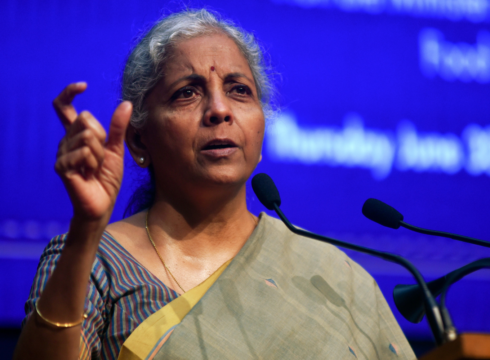SUMMARY
Banks can use Web3.0, data analysis and AI to detect fraud, track wrong money and detect unusual transactions: FM
Institute more such reforms like the account aggregator framework to allow private and public sector banks to interact within the system: Sitharaman
Are you all geared to have adequate firewalls? Are you protected against hacking and Black Swan events which bring down your systems?: FM
Inc42 Daily Brief
Stay Ahead With Daily News & Analysis on India’s Tech & Startup Economy
Finance Minister Nirmala Sitharaman has called on the banks to deploy new technologies such as artificial intelligence (AI) and Web3.0 for fraud detection and building early warning systems.
“Use of Web3, data analysis, Artificial Intelligence, deep dive into data – all of these should have some coordination by the IBA (Indian Banks’ Association). Leveraging AI should be an immediate priority for the banks, especially in fraud detection and generating early warning signs about something going wrong,” said Sitharaman.
She also said that banks could leverage Web3, AI for a host of reasons including detecting fraud, tracking of wrong money and detecting unusual transactions.
FM Sitharaman made the comments while addressing the 75th annual general meeting (AGM) of the IBA in Mumbai.
Touting the government’s account aggregator framework, the Minister called for instituting more such reforms that allow private and public sector banks to interact within the system.
“Do your systems talk to each other? It will be a big missed opportunity if these bridges between banks are not built. IBA should plan to make sure that all systems in all banks, whether private or public, should be talking to each other for the purpose of the customer…the customer is benefitted when such systems are put in place with the consent of the customer”, added Sitharaman.
She also drew attention to the fact that Regional Rural Banks (RRBs) needed more assistance for the digitisation push, adding that there was a need to bring these rural banks under the account aggregator framework.
Addressing a wide range of topics at the event, Sitharaman also spoke about the need for putting in place strong cyber security measures at the banks. She said, “Are you all geared to have adequate firewalls? Are you protected against hacking and Black Swan events which bring down your systems?”
She also exhorted the banks to digitise their services and ensure that their staff is digital savvy.
“If you are able to keep yourselves available for phone banking and digital systems, you are available for everybody”, added FM.
Echoing the sentiment, financial services Secretary Sanjay Malhotra also urged banks to embrace technology, warning that those who ‘lose out’ on digitising push may even ‘perish’
The Push For Digitisation
Indian banks have been known as the bastion of resisting change. From the cliched trope of a lazy bank clerk to retail banking, India has come a long way in the past few years.
The rising internet and smartphone penetration led to the explosion in the field of banking as banks quickly adopted online services, saving customers a trip to their branch.
As the pandemic gripped the country and the globe, digital banking deployment saw a sudden uptick as more and more preferred to access services from the confines of home, as against going to the physical branch. The ease of services available online just sped the adoption of the service.
In the mid-2010s as the banks were still bound by strict mandates and laws, small startups started emerging out of different parts of the country. These startups were pushing the envelope in terms of offering banking services, opening accounts online and even offering loans at the click of a button. Thus, began the Indian fintech boom led by Indian startups.
From setting up digital banking units to unveiling new fintech partnerships, the government in collaboration with the banking sector plans to spur the digitisation drive, especially across to the hinterlands.
What has emerged is a concoction that is largely urban-focused and tech-savvy, yet is vulnerable to security issues. Besides, these new-age companies still elude the ambit of regulators, allowing them to focus clearly on onboarding customers without the baggage of following norms.
While these startups say that they are compliant with all set norms, many major products such as the purported ‘neobanks’ are still not regulated by the central bank. Besides, the deployment of new technologies such as AI and blockchain are still very rare even as the country’s largest banks still grapple with outages and sub-standard online services.
A case in point has been HDFC Bank that has been, in the past, even ordered by the RBI to temporarily halt all digital business generating activities following multiple outages at the bank.
India is home to 12 public sector banks, 22 private sector banks, 44 foreign banks and more than 96,000 rural cooperative banks. At the end of the financial year 2020-21 (FY21), the total asset value of Indian banks stood at a mammoth $2.5 Tn.
Note: We at Inc42 take our ethics very seriously. More information about it can be found here.


